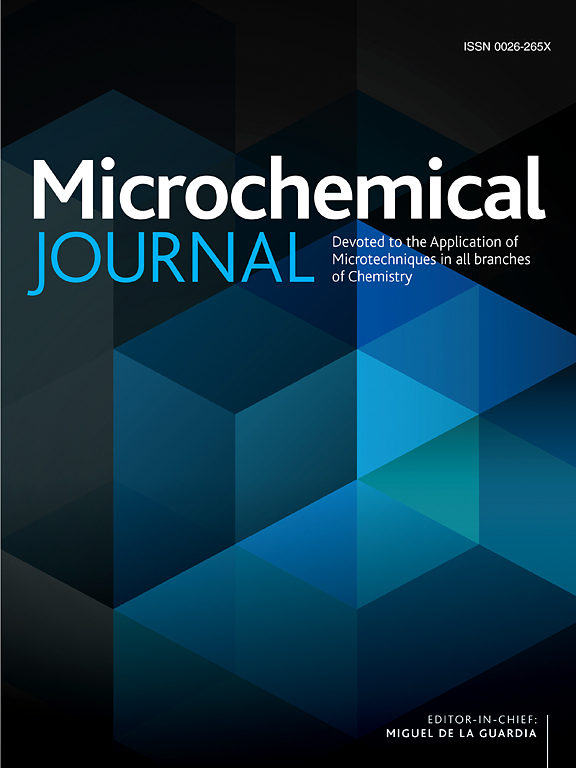Nanomaterials as signal amplifiers in CRISPR/Cas biosensors: A path toward multiplex point-of-care diagnostics
IF 4.9
2区 化学
Q1 CHEMISTRY, ANALYTICAL
引用次数: 0
Abstract
With the recent shift in perspective in compacting diagnostic laboratories to recreate miniaturised and portable diagnostic tools that can perform rapid, on-site detection, novel nanomaterials have been explored for their application in developing unique point-of-care systems. Upon integration with CRISPR/Cas, it can perform large-scale screening and potentially be applied even under remote conditions, especially in sudden outbreaks and pandemics. Despite the high trans-cleavage activity of the CRISPR/Cas system to give a rapid fluorometric response, their application towards detecting target analytes from complex samples suffers from limited stability and sensitivity. On the contrary, nanomaterials demonstrate robust activity and versatile properties, including rapid optical and electrocatalytic activity, which places them in an ideal position to be applied as signal amplifier systems along with CRISPR/Cas. With the integration of trans-cleavage activity of CRISPR/Cas and nanomaterials, it is possible to develop the next generation of diagnostics that can detect various kinds of biomarkers using different optical and electrochemical transduction methods, which play a crucial role in personalised medicine and precision agriculture. Through this review, we aim to explore the recent advances in the field of CRISPR/Cas – nanomaterial-based biosensors that offer the promising potential to be applied in the highly sensitive and selective detection of multiple target analytes. The potential of applying such biosensors towards developing multiplex biosensors will also be explored, followed by the outlook of this promising diagnostic technology.

作为 CRISPR/Cas 生物传感器信号放大器的纳米材料:通向多重护理点诊断的道路
随着近来诊断实验室向小型化和便携式诊断工具转变,这种诊断工具可以进行快速的现场检测,因此人们开始探索新型纳米材料在开发独特的护理点系统中的应用。在与 CRISPR/Cas 集成后,它可以进行大规模筛查,即使在偏远条件下也有可能应用,尤其是在突发疾病和大流行的情况下。尽管 CRISPR/Cas 系统具有很高的反式裂解活性,能快速产生荧光反应,但其应用于检测复杂样品中的目标分析物时,稳定性和灵敏度都受到了限制。相反,纳米材料具有强大的活性和多功能特性,包括快速光学和电催化活性,这使它们成为与 CRISPR/Cas 一起用作信号放大器系统的理想选择。将 CRISPR/Cas 的反式酶切活性与纳米材料相结合,就有可能开发出新一代诊断方法,利用不同的光学和电化学反式传导方法检测各种生物标记物,这在个性化医疗和精准农业中发挥着至关重要的作用。本综述旨在探讨 CRISPR/Cas 领域的最新进展--基于纳米材料的生物传感器具有应用于高灵敏度和选择性检测多种目标分析物的巨大潜力。我们还将探讨应用此类生物传感器开发多重生物传感器的潜力,并展望这一前景广阔的诊断技术。
本文章由计算机程序翻译,如有差异,请以英文原文为准。
求助全文
约1分钟内获得全文
求助全文
来源期刊

Microchemical Journal
化学-分析化学
CiteScore
8.70
自引率
8.30%
发文量
1131
审稿时长
1.9 months
期刊介绍:
The Microchemical Journal is a peer reviewed journal devoted to all aspects and phases of analytical chemistry and chemical analysis. The Microchemical Journal publishes articles which are at the forefront of modern analytical chemistry and cover innovations in the techniques to the finest possible limits. This includes fundamental aspects, instrumentation, new developments, innovative and novel methods and applications including environmental and clinical field.
Traditional classical analytical methods such as spectrophotometry and titrimetry as well as established instrumentation methods such as flame and graphite furnace atomic absorption spectrometry, gas chromatography, and modified glassy or carbon electrode electrochemical methods will be considered, provided they show significant improvements and novelty compared to the established methods.
 求助内容:
求助内容: 应助结果提醒方式:
应助结果提醒方式:


